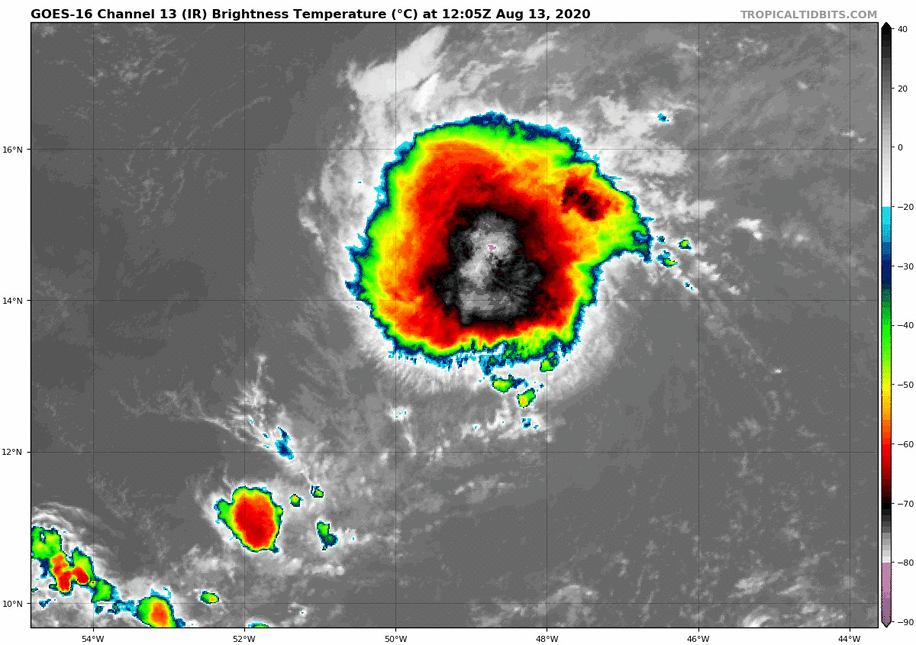The 10th named storm of the Atlantic hurricane season, Josephine is not expected to hit the Caribbean islands or the mainland United States, according to the National Hurricane Center.
Tropical Storm Josephine has formed in the Atlantic, 975 miles southeast of the northern Leeward Islands, and is expected to strengthen over the next two days before weakening as it passes well north of Puerto Rico, according to the National Hurricane Center.
The 10th named storm of the Atlantic hurricane season, Josephine is not expected to hit the Caribbean islands or the mainland United States, according to Dennis Feltgen, a meteorologist and spokesman for the center.
The current track shows it sweeping over the ocean well northeast of Puerto Rico on Sunday morning and then turning farther north out to sea. The National Weather Service said it had not issued any tropical storm warnings or watches for Puerto Rico or the U.S. Virgin Islands.
“Right now, we don’t expect this to be a land threat, and that is good news,” Mr. Feltgen said, adding that the storm could still be a threat to boaters.
Josephine’s formation is the latest evidence that this is expected to be an extremely active Atlantic hurricane season and perhaps the busiest on record. Never before has the Atlantic experienced 10 named storms this early in the season, which runs from June 1 through Nov. 30. The previous record was set more than a decade ago with the formation of Tropical Storm Jose on Aug. 22, 2005.
Josephine formed on Thursday, just days after Hurricane Isaias raked the Bahamas, parts of Puerto Rico and the Dominican Republic and then cut power to millions and caused flooding and fires along the East Coast, even as it weakened into a tropical storm.
After making landfall in North Carolina as a Category 1 hurricane, Isaias spawned a series of tornadoes, killing at least two people in Bertie County, N.C. Two others were killed by falling trees in New York City and St. Mary’s County, Md. And more than two and a half million people on the East Coast lost power, some for days.
Josephine was upgraded to a tropical storm after satellite data indicated its winds had increased to nearly 45 miles per hour, with even stronger gusts.
But the National Hurricane Center said that, after gaining strength over the next two days, Josephine is expected to weaken into a tropical depression. By early next week, the storm is expected to curve out to sea, sparing the Caribbean islands, including the Bahamas and the Dominican Republic.
“Hopefully, all this is, is a statistic and it doesn’t bother anybody,” Mr. Feltgen said.
The National Weather Service warned again last week that this is expected to be an unusually active hurricane season in the Atlantic. Historically, only two named storms form on average by early August, and the ninth named storm typically does not form until Oct. 4, according to the service. An average hurricane season produces 12 named storms, including six hurricanes. This year, the forecast calls for 19 to 25 named storms and seven to 11 hurricanes.
A tropical storm has sustained winds of 39 to 73 m.p.h., while a hurricane produces winds of 74 m.p.h. or greater.
The forecasts have stirred concern that emergency response efforts could be complicated by the coronavirus pandemic, which is hobbling relief agencies and could turn evacuation shelters into disease hot spots.
(Source: NY Times)

